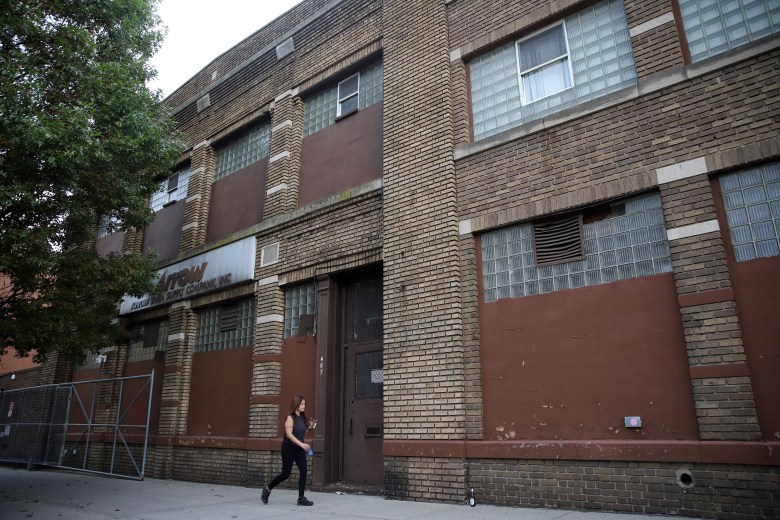When Arrow Linen Co. revealed last month it wanted to rezone its site on Prospect Avenue in Brooklyn, build two new residential towers and use the proceeds to relocate its laundry facility elsewhere in the borough, the Windsor Place Block Association jumped into motion. It created a group called Arrow Action to oppose what it called an “aggressive rezoning in our neighborhood.”
But almost immediately, Brooklyn members of the pro-housing group Open New York began circulating a petition in support of the Arrow project, which as of this week had collected more than 370 signatures.
When the city this fall began community outreach to explain plans to seek a developer to build an all-affordable rental building on city-owned property at 388 Hudson St. in Greenwich Village, the local group Village Preservation quickly mobilized in opposition, calling the tower inappropriate for the neighborhood and questioned whether the city was committed to permanently affordable apartments.
In response, City Councilmember Eric Bottcher, who represents the Village, and Manhattan Borough President Mark Levine quickly took to social media to reiterate their support for the 388 Hudson project — forgoing the usual ritual in which elected officials wait to declare their position until they officially have to cast a vote on a project.
Community opposition to efforts to build more housing, often labeled “not in my backyard,” or NIMBYism, is nothing new in New York City. But these days NIMBY is meeting YIMBY, or “yes in my backyard.”
“There are always going to be loud voices that are going to say no to proposals to build more housing,” said Annemarie Gray, executive director of Open New York. “We are also seeing a lot of people stand up and say ‘We need this.’”
Beyond local fights over individual projects like Arrow Linen and 388 Hudson, navigating the NIMBY vs. YIMBY split will be crucial as the administration of Mayor Eric Adams pushes forward with citywide land use changes under its “City of Yes” housing proposal that could make way for an additional 100,000 units in every neighborhood.
And it will be at work in Albany next year as City Hall tries again to win approval for measures it says are crucial to building more housing, including replacing the expired 421-a property tax break, allowing bigger residential projects than currently allowed, easing the conversion of obsolete office buildings into residential uses, and legalizing basement apartments and other so-called accessory dwelling units.
The failure of the city to build enough housing has been chronicled repeatedly over the last decade.
A Pew Charitable Trust study released in May showed New York City’s housing stock has increased only 4% since 2010, not nearly enough to keep up with a 22% increase in jobs during the same time frame. And from 2017 to 2021, New York City permitted just 13 homes for every 1,000 residents living there in 2017. Boston doubled that pace with 28, Washington, D.C., yielded 43 permits, and Seattle added 67.
To spur more production, Adams has set a citywide goal of 500,000 new residences over the next decade.
The Arrow and Hudson projects could produce more than 500 units of housing total, of which as many as 350 would have below-market rents — providing rare examples of new lower-cost housing in relatively affluent communities that have produced little in recent years.
Arrow Linen, the leading supplier of uniforms and tablecloths to restaurants in the region, has been operating a plant on the Prospect Avenue site since the 1940s. Its proposal calls for rezoning the property so it can build two 13-story buildings containing 244 units, 61 of which will have tenants’ incomes and rents capped under the city’s inclusionary housing mandates.
Echoing one of the City of Yes proposals, Arrow is seeking a waiver of standard parking requirements so it can produce more apartments instead. And it would take down a one-story building on the site to create open space.
Arrow asserts that relocating elsewhere in Brooklyn would allow it to increase its unionized staff of 47, which had been much higher before the pandemic. The company has since relocated some operations to a plant it operates in Garden City, L.I.
‘We Perpetuate the Displacement’
The Arrow site is located in the 39th Council District, currently served by Councilmember Shahana Hanif and before that by Brad Lander, who is now city comptroller.
In the past nine years, the district has produced only 700 new units of affordable housing, ranking it 27th out of the 51 Council districts, according to the New York Housing Conference, which advocates for policies promoting affordable housing. The district is affluent with a median household income of $129,000, well above the citywide median of $64,000.
The Arrow Action coalition formed by the Windsor Place Block Association did not respond to requests for an interview, but a presentation produced by the coalition reviewed by THE CITY claims that the rezoning would undo downzoning that took place in the early 2000 and bring inappropriate towers and 1,100 residents that would overrun the neighborhood.
Meanwhile, local residents who are Open New York members are making sure officials hear another side of the story.
“Windsor Terrace and South Slope have become increasingly unaffordable in recent years, and it is imperative that we come together to ensure that housing growth keeps up with demand,” their petition says. “By standing in the way of new homes, we perpetuate the displacement that is occurring in our community and make our neighborhoods less inclusive and welcoming.”
The 388 Hudson site was acquired by the city in 2002 as part of the third water tunnel project with the idea that at some point it could be used for housing. In April, the city Department of Housing Preservation and Development (HPD) indicated it would go ahead and began soliciting community comment on its plan, which led Manhattan Community Board 2 to request more housing be built there.
HPD has floated the idea of a 350-foot-tall tower that would contain somewhere between 250 and 300 units — all of them which would be classified as affordable.
While Council District 3 in Manhattan has produced a considerable amount of new affordable housing, Greenwich Village itself has added less than 50 units, according to the New York Housing Conference, where the median household earns $170,000 per year.
“Our focus is creating new affordable housing opportunities for low-income families to access the incredible amenities in the West Village and Hudson Square neighborhoods,” HPD deputy commissioner Michael Sandler told THE CITY, “while creating a new building that residents and neighbors can be proud of.”
While there are towers as high in Hudson Square and along the river, the building would be the highest building in the Village itself, which has drawn sharp opposition from Village Preservation. Since most of the Village is landmarked, sites for development are exceptionally rare.
“There is no need for a tower that high,” said Andrew Berman, the group’s longtime executive director. He claims the city could build the same number of units in shorter buildings, but without specific plans there is no way to assess that claim.
The question of whether apartments will be “permanently affordable” exasperates those who support the development.
HPD says that as with other projects, it would sign a 40- to 60-year agreement with a developer to guarantee income and rent limits, as well as file deed restrictions dictating future use. It’s also expecting that in half a century the agreement will be extended, including affordability requirements.
Both projects are in the early stages of the city’s land use process and may not come to a vote in the City Council for several years. But the stakes are high and the prospects much better than they might have been previously.
“More and more Council people and state legislators are realizing there are just not enough housing options in New York,” said Gray.




